SintraCascaisSesimbra.com
The best independent guide to Setubal
SintraCascaisSesimbra.com
The best independent guide to Setubal
Setubal, Portugal: an independent tourism guide for 2025
Setúbal is a proud working port with unvarnished character, that offers an authentic glimpse into Portugal's seafaring roots. In a region of polished tourist towns, this raw maritime soul is the very heart of Setúbal’s appeal.
For five centuries, Setúbal has looked outward to the Atlantic, building its fortune on salt, sardines, and the courage of its mariners. That maritime legacy permeates every corner of the city, from weathered azulejos depicting naval scenes to the unmistakable scent of grilled fish that drifts through the evening air. The city’s history is charted in its formidable monuments, from the magnificent Forte de São Filipe that guards the estuary to the Igreja de Jesus, an early masterpiece of Manueline design.
Yet the true spirit of Setúbal is found not just in its monuments, but in its lively daily life. It is best experienced in the wonderful chaos of the Mercado do Livramento, one of Portugal's finest markets, and in the bustling seafood restaurants serving the local speciality, choco frito (fried cuttlefish). This vibrant atmosphere even extends to the Sado Estuary itself, home to a pod of bottlenose dolphins whose playful presence makes for an unforgettable boat tour.
While the city itself is fascinating, it also serves as a gateway to a region of stunning natural beauty. To the east, the lush hills of the Serra da Arrabidaa conceal some of Portugal’s most idyllic beaches, while across the Sado Estuary lie the pristine sands and turquoise waters of the Tróia Peninsula.
This guide will provide everything you need to experience Setúbal, helping you discover why this uncompromising port city is perhaps the most authentic destination in the Lisbon region.
Highlights of Setubal
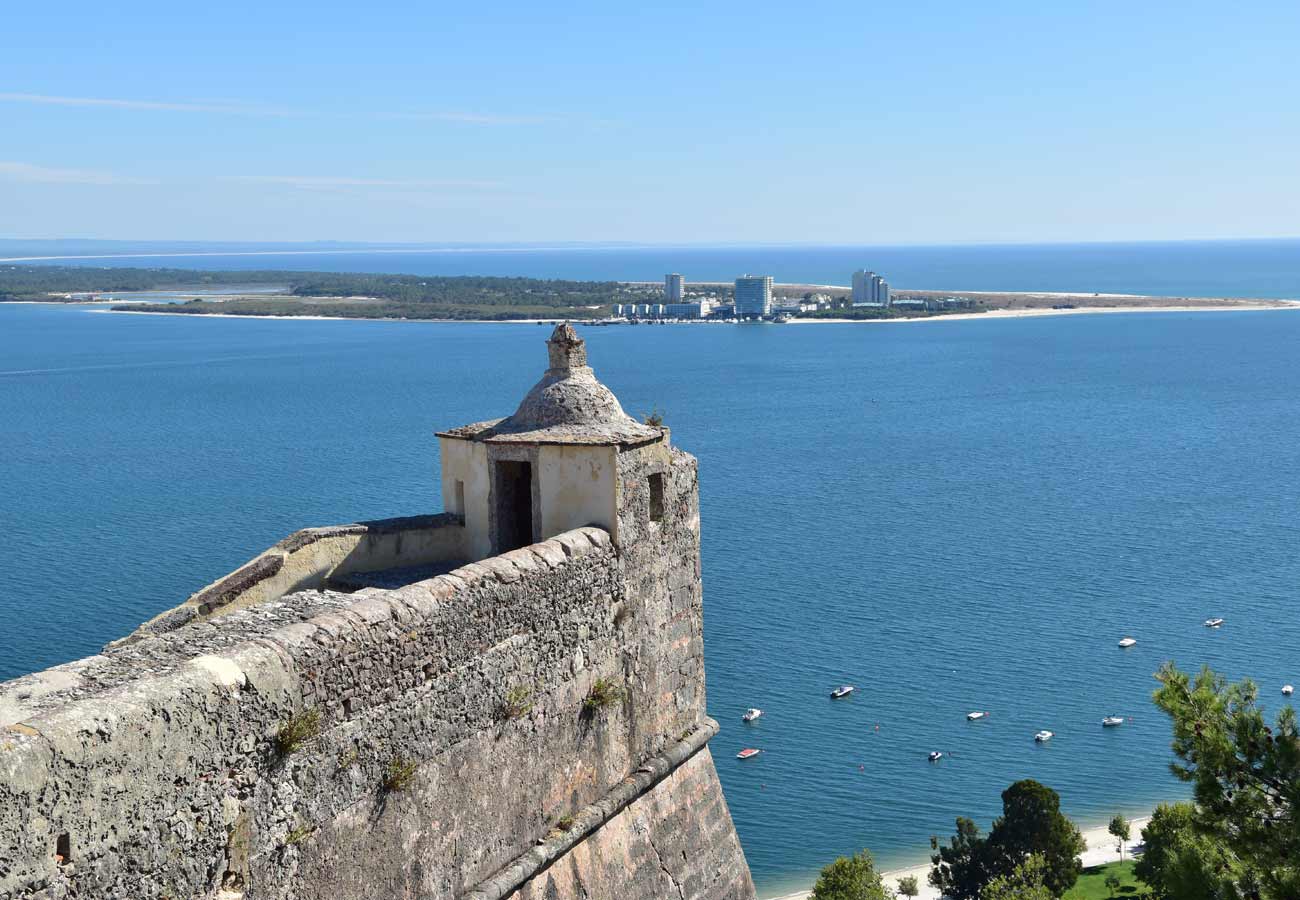
The Forte de São Filipe – The heavily fortified fort was constructed in the 16th century to protect the city from seabound threats during the era when Portugal and Spain were unified. The fort stands atop the highest point of Setubal, and from the star-shaped battlements are stunning views of the entire region.
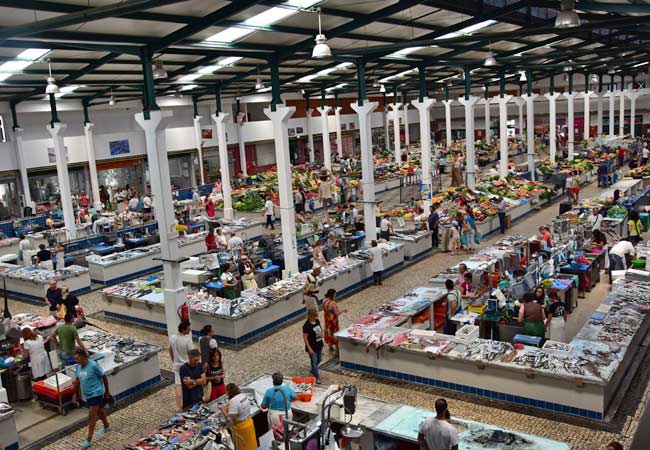
The Mercado do Livramento – One of the best food and fresh produce markets of Portugal, with a vast array of stalls selling everything from fresh fish to local handicrafts. A lively and chaotic slice of authentic Portugal.
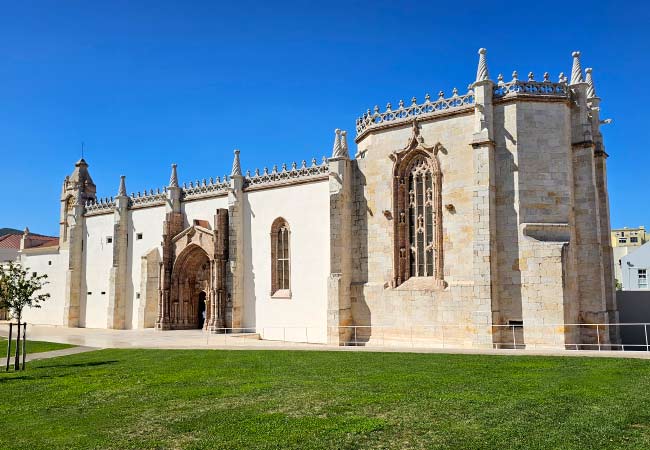
Igreja de Jesus – The low-rise church is the first example of Manueline architecture in Portugal, a richly ornate and decorative late-Gothic style. The church was attached to the Monastery of Jesus, which today has been converted into the city museum.

Choco Frito – The delicious speciality dish of Setubal, pan-fried cuttlefish that has been dusted in flour. The dish originated from Setubal’s bars and restaurants, where off-cuts of fish were sold inexpensively as an accompaniment to drinking and socialising.
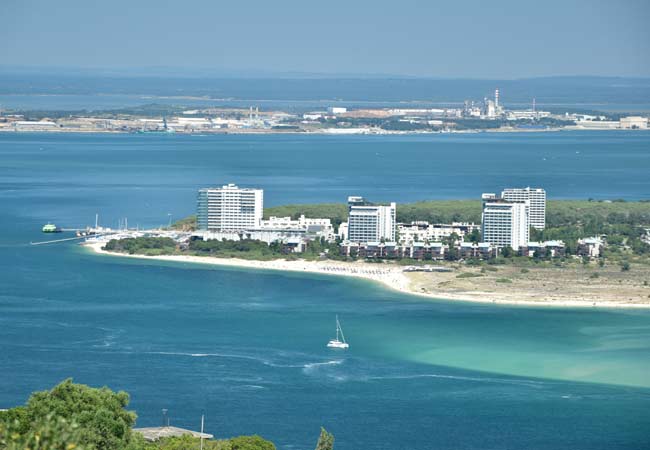
The Troia Peninsula – The sandbar peninsula and pristine pine forests are the secluded holiday destination of Europe’s rich and famous. The coastline of Troia comprises beautiful sandy beaches, and it is easy to travel there by the regular ferry from Setubal’s harbour.
Highlights of the Setubal region
If you are planning a longer stay in Setubal, the highlights of the surrounding region include:
A drive along the N379 – One of the most scenic roads of Portugal, which follows ancient farming trails through the Serra da Arrábida hills.
Palmela Castle – A magnificent castle with wondrous views over the region
Praia do Creiro – Arguably one of the most beautiful beaches in Portugal; golden sands and turquoise sea waters that are surrounded by the pristine forests of the Serra da Arrábida.
Wine tasting at the Palácio da Bacalhôa – Taste some of Setubal’s finest wines in the magnificent setting of the Palácio da Bacalhôa. (Note: this is in the town of Azeitão and bookings are required - www.bacalhoa.pt)
The Lapa de Santa Margarida – A small chapel located in a cave at the base of a cliff – the appeal of the chapel is the difficult walk down and unique setting.
Ruínas Romanas de Troia – The ruins of a Roman-aged salting factory surrounded by the paradise beaches of Troia.
For a complete guide to the best sights and activities in Setubal please see this guide.
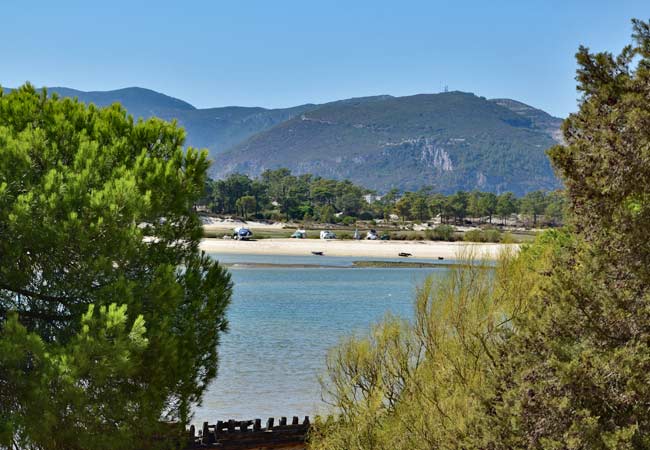
The eastern side of the Troia Peninsula near the Ruínas Romanas de Troia
A day trip to Setubal
Setubal makes for an enjoyable day trip from Lisbon or Sesimbra, but is often overlooked by tourists, who tend to favour Sintra, Cascais, Evora or Obidos. The city offers a range of varied activities and sights while having a much more authentic Portuguese atmosphere than Lisbon.
Setubal is an ideal destination to experience typical Portuguese daily life. There is the lively Mercado do Livramento market (Tues-Sun), the social cafes on the Praça de Bocage or the delicious seafood restaurants close to the fishing harbour. Setubal has the added advantage of not being that famous, so it never gets overrun with coach loads of tourists.
A typical day trip to Setubal would include the market, the historic centre, the waterfront, the fishing harbour and then visit the castle., It is very easy to travel to Setubal for your day trip; there is a direct train from Lisbon or a regular bus service from Sesimbra.
Below is an interactive tour map for a suggested day trip to Setubal. The tour route starts at the train station, and the total tour is 8.7km. Also included in the map is an additional walk to the Albarquel beach (10), which is marked in grey.
Sights: 1) Santa María church 2) Praça de Bocage 3) São Julião church 4) Câmara Municipal (city hall) 5) Casa da Cultura 6) Mosteiro de Jesus 7) Mercado do Livramento 8) Forte de São Filipe 9) Albarquel urban park 10) Albarquel beach 11) Doca de Pesca (Fishing harbour) 12) Jardim Engenheiro Luís (riverside garden) 13) Atlantic Ferries (ferry to Troia) 14) Doca do Comércio (commercial fishing port 15) Miradouro de São Domingos (viewpoint) 16) Museu do Trabalho Michel Giacometti 17) Portal Historico (gateway)
Advice: It is a very steep uphill walk to the Forte de São Filipe (8), and you may wish to take a taxi after visiting the Livramento market (7).
Related articles: Setubal beach guide
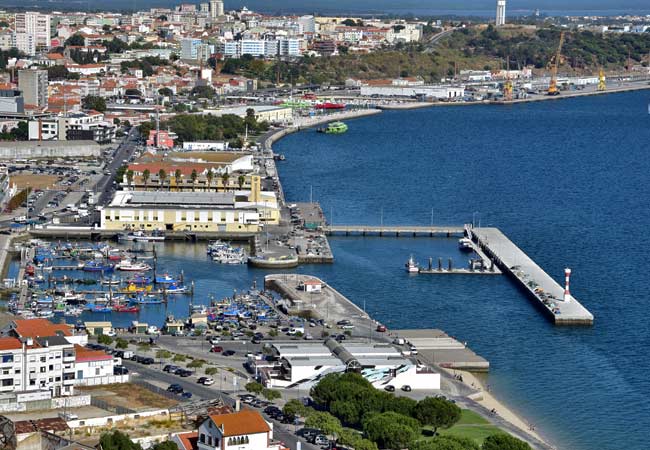
The Doca de Pesca and harbourfront of Setubal
The best activities and tours in Setubal
There are many enjoyable activities within Setubal and the surrounding region; some of the best provided by GetYourGuide include:
• History of Setúbal and Fish Market Tour (from Lisbon)
• A day trip from Lisbon to Setubal and visit the oldest wineries of the region
• Go in search of the Sado dolphin community on a relaxing boat trip
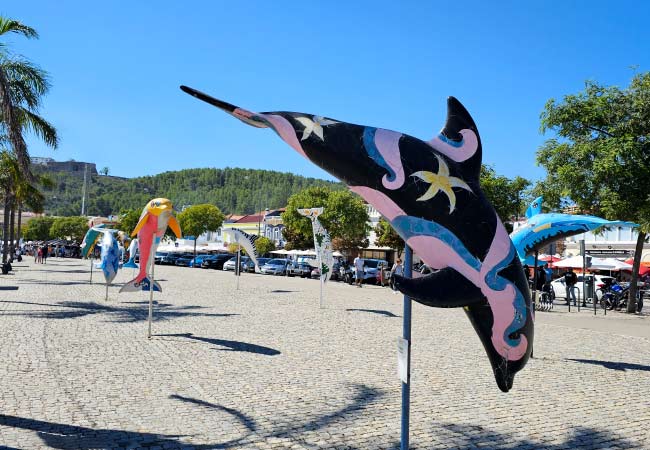
The colourful “Golfinho Parade” on the Avenida José Mourinho
A holiday to Setubal
Setubal is not a conventional holiday destination, but if you want somewhere truly unique, Setubal will not disappoint. Setubal should not be mistaken as a pristine beach resort or a manicured tourist destination; this is a hardworking port city full of character and grit.
As a holiday destination, Setubal is better suited for more independent tourists or cultured travellers who are seeking an authentic Portuguese experience. If you are seeking more of a beach and relaxing holiday destination, consider Sesimbra, Cascais or Costa da Caparica.
Setubal does make for an interesting base to explore the region, and there are numerous day trips to easily fill a week-long trip. Often, Setubal is combined as part of a tour of central Portugal or as a second destination (e.g. Lisbon and Setubal or Cascais and Setubal).
Setubal provides an excellent standard of accommodation, which is significantly less expensive than the more famous resort towns or Lisbon. Food, dining out, and nightlife are exceptional values for money, and this is because Setubal is designed for Portuguese and locals. To get the most from the Setubal region, a car is recommended so that you can explore the Arrábida hills and visit the Cabo Espichel headland.
The map below shows the best hotels and accommodations in Setubal; if you adjust the dates to your trip, it will display current prices and availability.
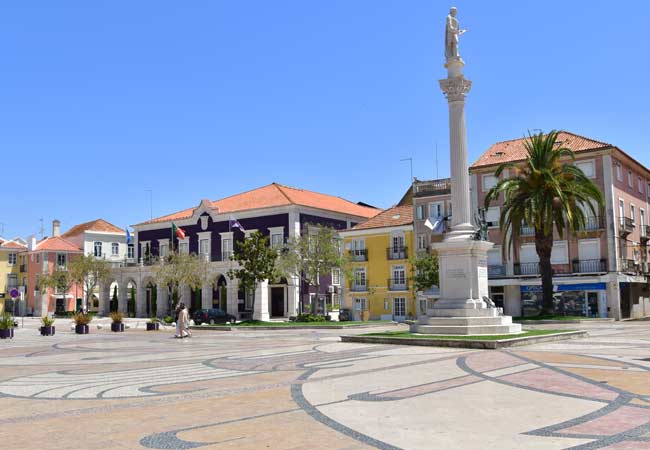
The Praça de Bocage is the main plaza of Setubal
Setubal or Sesimbra?
Setubal and Sesimbra may be geographically close, but they are extremely different in almost every tourism-related aspect.
Setubal is a major city with a heavy focus on its manufacturing and docks, while Sesimbra is a much smaller fishing town that is a popular holiday destination. Sesimbra is where to head for a couple of relaxing beach days, but Setubal has much more to see and do.
If you are seeking a holiday destination that still retains its Portuguese atmosphere, then Sesimbra is ideal. Setubal is much better for a day trip or as part of a tour of Portugal.
Both Sesimbra and Setubal could be combined in a single day trip, but the number of sights in the surrounding region lends to an extended stay.

Lisbon to Setubal
The best way to travel from Lisbon to Setubal is by train.
The train service is operated by Fertagus (the only private train company in Portugal), and the journey takes one hour. An adult ticket costs €5.35 and is charged to the ‘Navegante’ card, which is used for all public transport in Lisbon.
In Lisbon, the train departs from the Roma-Areeiro station and passes through the Entrecampos, Sete-Rios and Campolide stations. There is at least one departure every hour, and the latest timetable can be seen on the Fertagus website: www.fertagus.pt
Advice: Do check the timetable, as not all departures from Lisbon terminate at Setubal. Many services stop at Coina, 15km to the northwest of Setubal.
In Setubal, the train station is to the north of the city (GPS: 38.53117, -8.88497) and is an 18-minute (1.3km) walk to the Praça de Bocage.
There are many bus services connecting Lisbon to Setubal, but the Fertagus train is more convenient. The bus services of the Setubal region are operated by Carris Metropolitana, and there are express services from Lisbon (route 4720 or 4725). Details can be seen on the Carris Metropolitana website: carrismetropolitana.pt
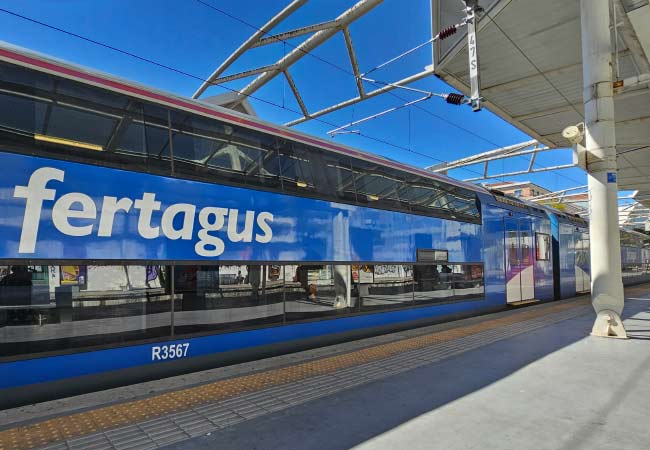
The double decker Fertagus train in Roma-Areeiro
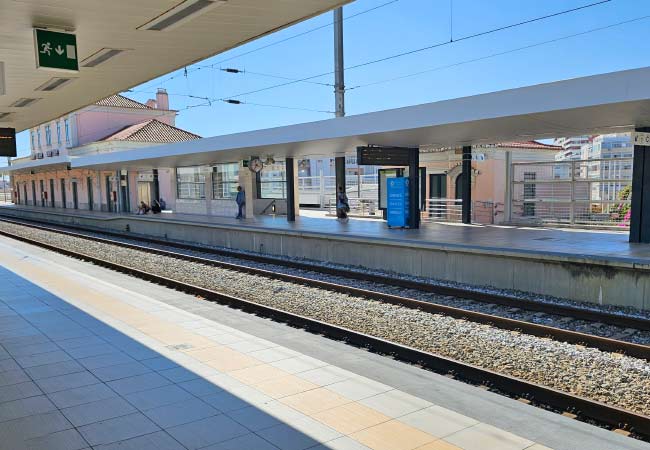
Setubal train station
Setubal to Troia
There are two ferry services from Setubal to Troia: a fast passenger catamaran and a slower ferry for vehicles. Both services are operated by Atlantic Ferries.
The bright green catamaran departs from Cais 3 in Setubal (GPS: 38.52065, -8.88929) and terminates at the marina complex in Troia.
A return journey on the passenger catamaran costs €9.10 – the fare is collected when heading from Setubal to Troia, and the return (Troia to Setubal) is free. The ferry timetable is seasonal, but there is at least one departure per hour, with more services in the summer. For the latest timetable please see the Atlantic Ferries website: www.atlanticferries.pt
The vehicle ferry departs from Setubal docks (GPS: 38.52168, -8.88544) and terminates at ‘Sol Tróia’, which is halfway down the eastern side of the peninsula. The fare for a car and a driver costs €20.40, and two trips (a return) is €36.70. Each additional passenger is €5.40.
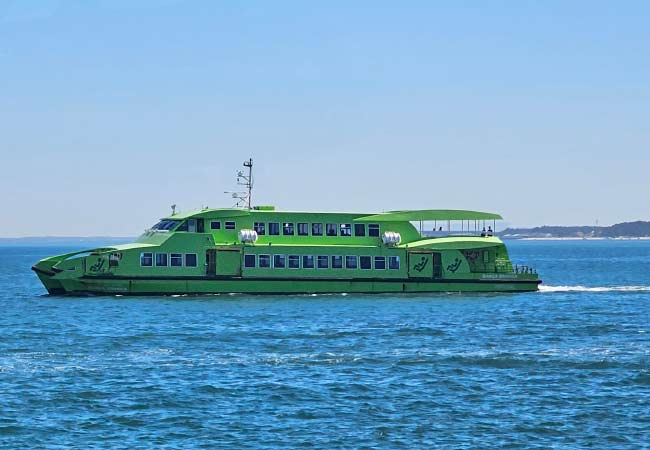
The Catamaran to Troia is very popular during the summer, as the whole of the city heads to the beaches of Troia.
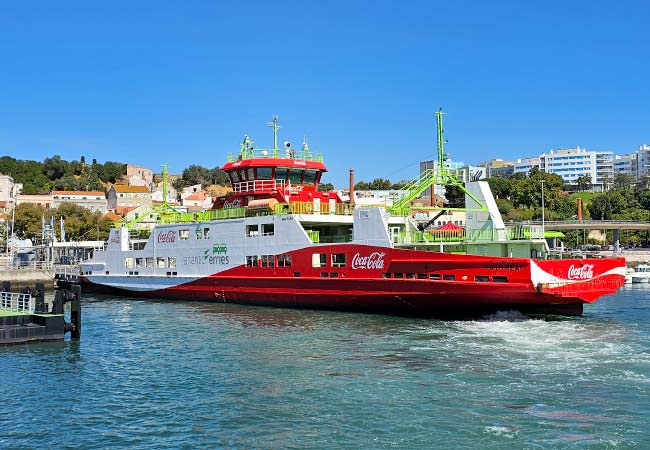
The vehicle ferry pulling into Setubal docks
The dolphins of Setubal
The Sado Estuary is the permanent home to a large pod of bottlenose dolphins, which can be frequently seen swimming and playing within the waterway. Currently, there are 28 dolphins in the pod, and they have been in the estuary since 1981 after discovering the bountiful supply of food (sea bass, cuttlefish and mullet) within the marsh fringes of the estuary.
A unique activity while in Setubal is to join a dolphin-watching trip, and these tours cost around € 45 for a two-hour tour - further details here.
The Forte de São Filipe
The best tourist attraction in Setubal is the Forte de São Filipe.
The fort dates from 1590 and was constructed during the Philippine Dynasty when Spain ruled over Portugal. The fort protected the mouth of the Sado Estuary from pirate raiders and seaward attacks (notably from the English and Dutch) but also demonstrated Spanish power to the population of Setubal, who had resisted Spanish rule.
The first stone was ceremonially laid by King Filipe I in 1582, and the fort is dedicated to Saint Philip, but this was also the name of the king…
The Forte de São Filipe was designed in an irregular star-shaped layout, with solid walls that could withstand heavy cannon bombardment. From the battlements are wonderful views over the Sado Estuary and city, while inside the fort is a beautiful, tiled chapel dedicated to Saint Philip.
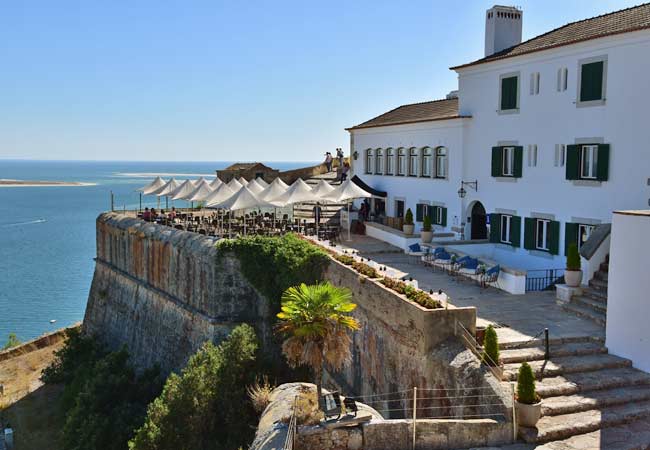
The barracks of the fort have been transformed into a luxury hotel – The Pousada de São Filipe
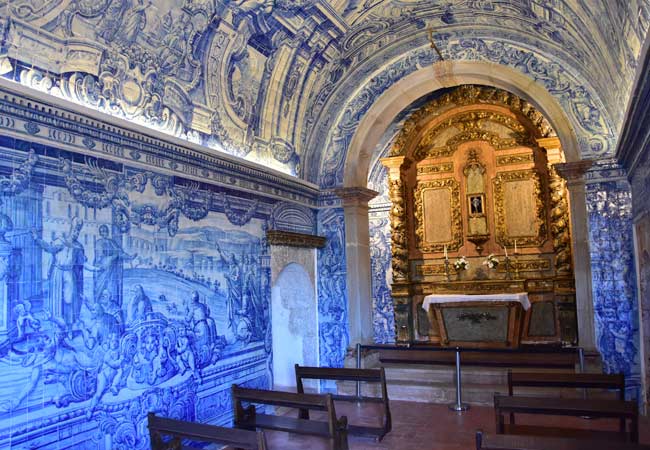
The stunning little chapel dedicated to Saint Philip
The Mercado do Livramento
The Mercado do Livramento is one of the best covered markets in Portugal. The market comprises over 130 stalls selling fresh produce through to local handicrafts, but the main speciality is the large fish market.
The fish market is a chaotic and lively affair, where the fresh catch from Setubal’s fishing fleet is sold by loud fishwives, and savvy chefs come to secure the finest cuts of seafood. The market (Tues-Sun) is open from 7am to 2pm, but most of the fish is sold by 11. The market is closed on Mondays.
On the entrance to the market are beautiful tile paintings depicting the traditional agricultural life of the Setubal region, and are worth a visit even if the market is closed.
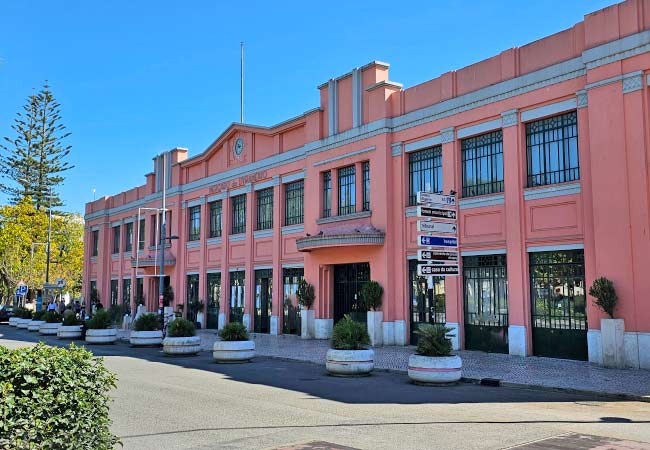
Our most popular guides to the Setubal region
























